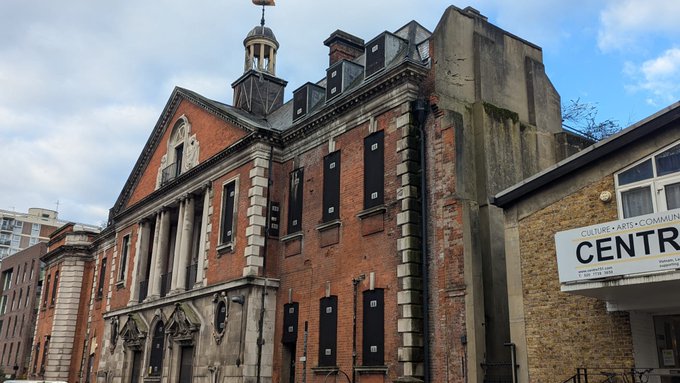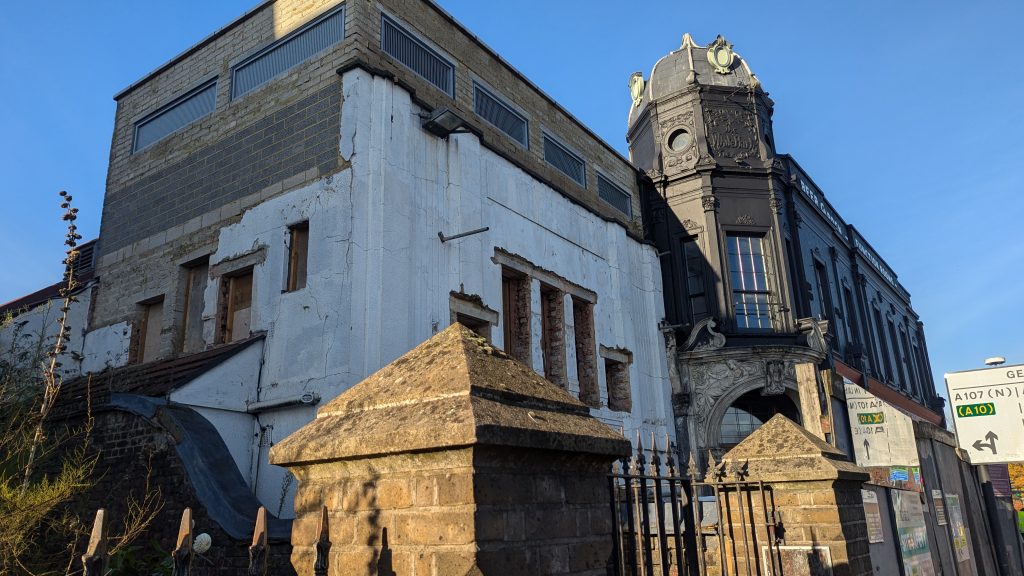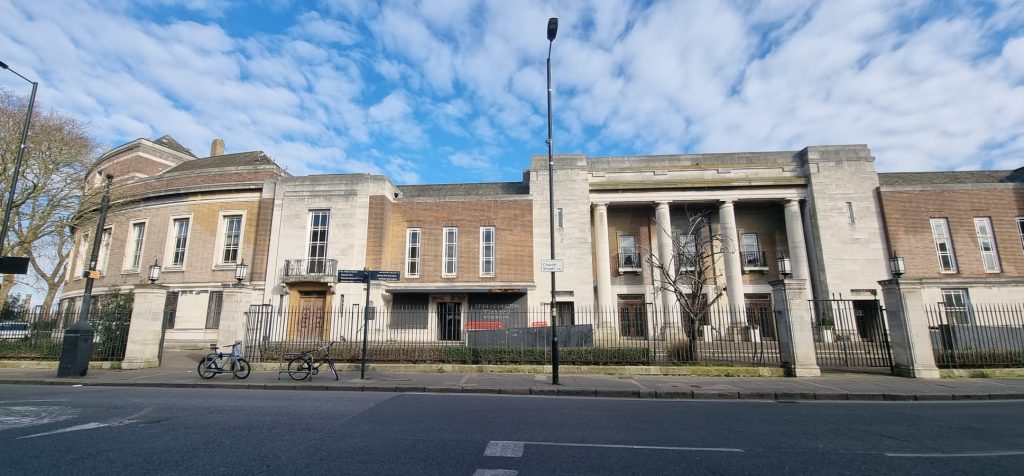Hackney is host to a wealth of nationally and locally listed historic buildings and structures. Hackney Society’s Buildings at Risk Group is a forum for those interested in monitoring and helping to protect buildings and other heritage at risk in Hackney. We meet monthly via Zoom on the 2nd Monday at 6pm and anyone with an interest in Hackney’s heritage is welcome to attend. If you’d like to be added to the mailing list please email info@hackneysociety.org. The rolling minutes of our meetings are available here.
We focus on two types of listed heritage assets:
Nationally (or statutorily) listed buildings, structures plus registered parks and gardens. These are protected by law and are entered in the National Heritage List for England (NHLE). Hackney boasts hundreds of such heritage assets, 31 of which appear in Historic England’s 2024 Heritage at Risk Register.
Locally listed heritage assets. Local listing does not carry the legal protections of national listing but such status does recognise their heritage significance and positive contribution to the character of the borough. Hackney’s current local list contains 470 entries.
The Group is also open to discuss and advocate for at-risk heritage assets not covered by any form of listing, but on a strictly case-by-case basis. Any such asset must meet at least one of the criteria for local listing set and used by Hackney Borough.
By at risk, we mean the threat of significant damage, dereliction or even destruction. We deal with buildings and structures that are not known to have any development proposals likely to be submitted for planning approval in the foreseeable future, as well as those for which planning consent is in place but have seen no resultant action for an extended period of time. We also consider buildings that are the subjects of imminent or ongoing planning enforcement actions.
Buildings known to be the subject of impending plannings applications, applications awaiting approval or recently approved applications, lie outside of the remit of the Group. The first two statuses are covered by the work of the Hackney Society’s Planning Group.
Below are examples of the types of case which are discussed in Group meetings:

Haggerston Baths, Whiston Road, E2
Former public baths and swimming pool, opened in 1904 and closed in 2000. Since then refurbishment proposals have come and gone.
The building is nationally listed at Grade II and has been on the Heritage at Risk Register for a considerable length of time. The Hackney Society is concerned that there has been no progress for too long now and would like to see Hackney Borough act to resume the restoration of this important building.

Ethiopian Orthodox Church Of St Mary Zion,
The former Clapton Cinematograph Theatre, built in 1910 shortly after the passing of the 1909 Cinematograph Act. Planning permission was granted in 2012 for its conversion from a night club to a church and associated youth and community centre, plus a new-build vicarage added to the rear of the building. The building was locally listed by Hackney Borough in 2012, after it was turned down for national listing. Buildings at Risk Group members have expressed concern that recent changes to the front elevation of the building are not in accordance with the consented plans, and that original features may have been lost internally.

Stoke Newington Municipal Buildings, Stoke Newington Church Street, N16
Former town hall and assembly hall of the old Metropolitan Borough of Stoke Newington, built in 1935–37 and with interesting features from the Second World War. Extensive restoration work in the 2010s has not proved wholly successful, with the failures of the roofs and rainwater goods resulting in internal damage and instability, and causing of most of the building to be vacated. The building and surrounding walls are nationally listed and were added to the Heritage at Risk Register in 2024. Discussions are ongoing about the future of this public building, which would require great sums of money to be repaired and brought back into use.